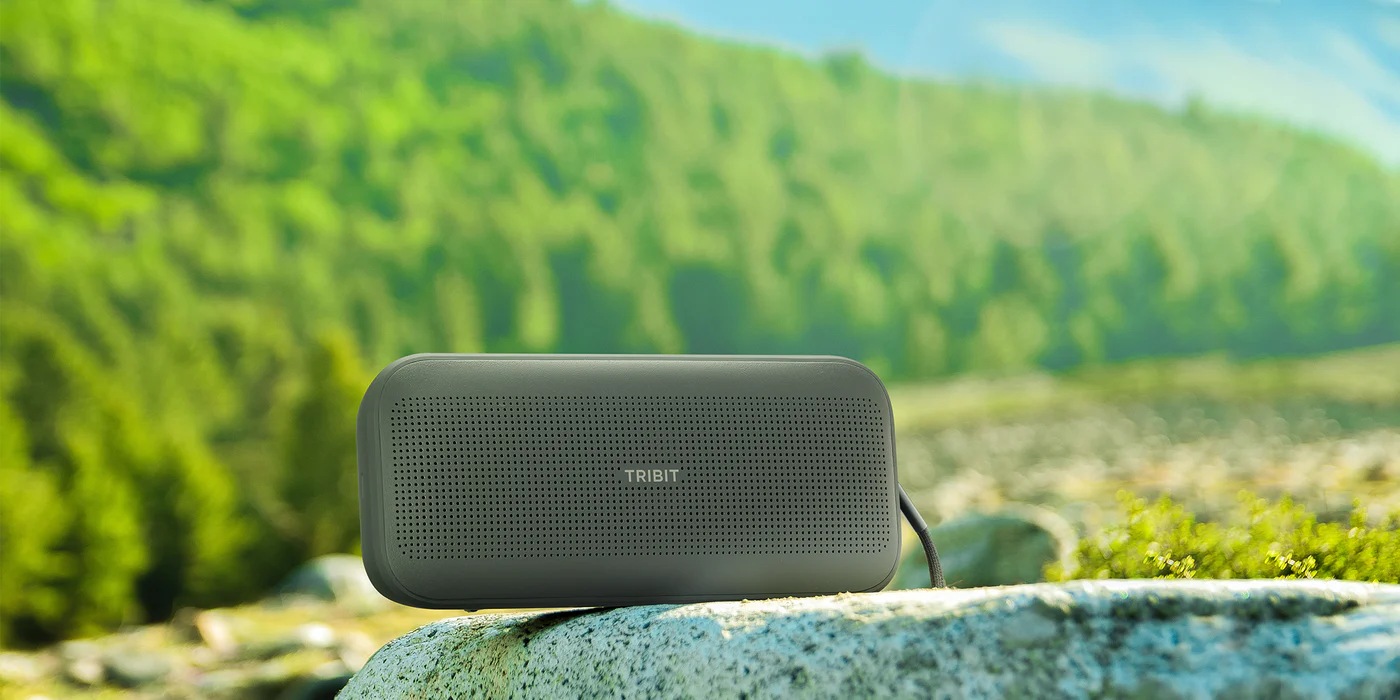I’ve been offered a lot of Bluetooth speakers to review, and I’ve turned down most of them because I’m already familiar with
Last year I wrote that the Tribit StormBox Micro 2 had absolutely no right to be as good, either in size or price – and the same applies to the company’s latest offering…
Advertisement
Tribit Stormbox Flow: appearance
The Stormbox Flow is a little larger and 10 bucks more expensive ($80), but it’s still very much the type of speaker you randomly toss in your bag when you want something better and louder than laptop speakers, but without it. size and weight. punishment of a more serious speaker.
The speaker is over 200mm long, 90mm high, 50mm thick and weighs 660g. It looks as anonymous as possible, with a matte dark gray finish and a discreet logo on the front.
There are seven hidden mounting buttons on top, the three main ones are larger and have a contrasting color:
Play/Pause Volume Up Volume Down
Advertisement
The rest are smaller in size and match the color of the case:
Power Bluetooth pairing Equalizer adjustment Stereo pairing
Specifications
The speaker power is 25 W, frequency range is 50-20 kHz, Bluetooth 5.3 works with a declared range of 40 meters (about 120 feet).
The battery is 4,800 mAh, 17.52 Wh, with a claimed life of 30 hours (at 60% volume with bass boost turned off) and a recharge time of four hours.
The water resistance is IP67 certified, which means it can withstand being submerged in up to one meter of water for up to 30 minutes, which should be enough to handle even heavy rain.
You can combine two of them into a stereo pair.
Tune
I mean, this is a Bluetooth speaker, so the setup is the same for pretty much everything. Turn it on, press the Bluetooth button, connect to it, done.
Where Flow really scores highly is the ease of stereo pairing. Connect to one speaker, then press the stereo pair button on each speaker and wait. After about five seconds, the connection will be confirmed with a voice message indicating which speaker is on the left and which on the right.
My only comment here is to recommend that you place them some distance apart before connecting so you can clearly hear which is which.
Performance
As I said about the Micro, which I tested earlier, it’s a small and inexpensive Bluetooth speaker, and nothing in this category will make your home hi-fi system sweat.
But once again, I was both surprised and impressed by the quality and volume of sound produced by such a small speaker. Indeed, I waited until mid-afternoon to (briefly!) test the maximum volume so as not to disturb the neighbors.
In Music mode, the sound quality is impressive for its size. I also tested a stereo pair, and the result was exactly what you’d expect: same quality, twice the volume. This would be overkill for any indoor use, but makes for a very reliable atmosphere for a pool party.
Some will want more bass, and to cater to those tastes, Tribit’s companion app lets you turn on a bass boost mode.
The XBass mode definitely transforms the speaker’s sound and works well at moderate volume levels, but I found that on some tracks it can produce very unpleasant distortion at higher volumes. It was present in both speakers I tested, and was so bad that I’m pretty sure it was a configuration error that the company should be able to fix through the app.
Personally, I prefer the sound without it, and was then able to crank up the volume to high volume without distortion, even when boosting the bass with the EQ settings, which supports the idea that it’s a bug in the app’s specific XBass setting.
conclusions
Firstly, if you like heavy bass, I would recommend waiting and seeing if the problem with XBass is resolved before purchasing. I’ll update if I hear more about it.
But beyond that, I’m impressed with the performance for both the size and the money. This will be the speaker that travels with me for use in hotel rooms and vacation apartments, and in neither room do I expect the volume to go above 50%.
The Tribit StormBox Flow can be purchased from the company’s website for $79.99.
